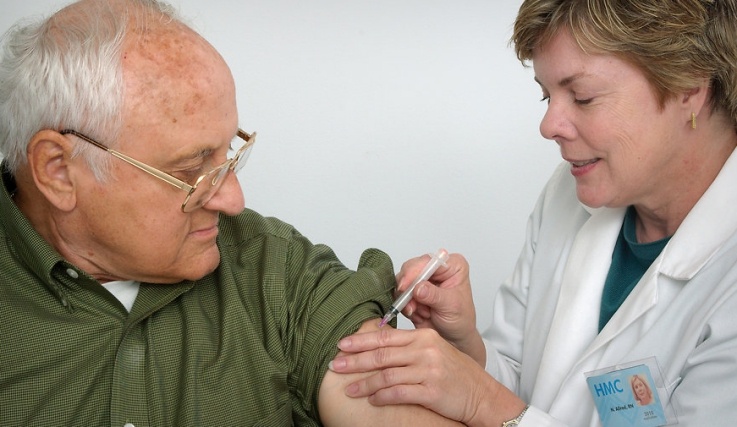The long term care industry has regulations that require you to be attentive to the quality of care and quality of life you deliver to your residents. Communities should place a much greater emphasis on the Quality Assurance/Performance Improvement (QAPI) process, coupled with a proactive and ongoing risk management program.
Peter Feeney
Recent Posts
Risk Management Is Your Path to Meeting Regulatory Requirements
Topics: Risk Management
See a 300% Jump in ROI on Adverse Event and Incident Tracking
Your organization manages adverse events much like everyone else. Someone, likely a pretty high-functioning nurse, accumulates paper incident reports manually or from your EHR system. They periodically type them into a spreadsheet, then sort them and count the different types of incidents by community. They do a pretty good job of it, even though they complain that they aren’t very good at Excel, that some buildings don’t report consistently, and that they can’t get anybody’s attention with the results that are often murky at best compared to benchmarks that they can’t find.
Let’s put aside the qualitative aspects of incident reporting and let’s overlook the most important aspect of your current incident reporting and adverse event management process—that it doesn’t work as well as it should and could. Let’s focus on one simple thing: how much does it cost you?
Topics: Quality Assurance, Incident Reporting
6 Things Top LTPAC Management Teams Do to Manage Adverse Events
There are top performers in every industry and every sport, and they have remarkable similarities. Sure, they have talent, but they also approach their work in the same ways and with the same tools.
I was just watching the U.S. Olympic Trials, which was dramatic and exciting. For most of the athletes, it was their best chance to go to the Olympic Games, to be an Olympian. No matter if they were a high jumper, a sprinter, a wrestler or a gymnast, after their event—when the microphone was placed in front of them, every one of them said the same thing: “I worked so hard to get here.”
Topics: Quality Assurance, Patient Care
Everyone has heard the stories of good doctors with bad bedside manner getting sued more often than bad doctors with good bedside manner. It's true with doctors, and it's true with facilities.
Are you nice? Would other people say you're nice, or is this just your own perception of yourself? Nice people are valued in our organizations because they're the glue that can hold a community together. Ever meet a person who wasn’t nice who was the “go to” person on a team or organization? Not often.
Topics: Patient Care
Past Non-Compliance Doesn't Have to Result in a Citation
Have you ever had an adverse event happen in your community where you identified that a deficient practice may have contributed to, or failed to prevent, the incident? This may surprise you, but CMS understands that this can happen and they're willing to give you an opportunity to avoid citations! Shocking but true, back in October 2005 a memo was published by CMS outlining the History of Past Non-Compliance (HPNC) process (www.cms.gov).
Topics: Quality Assurance, Administration, Regulatory Compliance
Protecting Frail Patients from Fall-Related Injuries
It's a well-known fact that many resident falls aren't preventable. But it's still our responsibility to decrease the risk of significant injuries related to falls.
A large study from Canada showed that frail, elderly patients face a significantly increased risk of mortality in the year after undergoing major elective, non-cardiac surgery. Being frail before surgery substantially increases the risk of adverse postoperative outcomes and that frailty had the strongest impact on the risk of mortality after total joint arthroplasty.
Topics: Risk Management, Quality Assurance, Patient Care
Risks of Using Flu Vaccines and Statin in Senior Care
According to a pair of studies published online in the Journal of Infectious Disease, statins—a class of drugs widely used to reduce cholesterol in older adults—may reduce the response to and effectiveness of influenza vaccinations.
Topics: Patient Care
F323 is the federal tag that is often cited at actual harm or immediate jeopardy. Have you received any citations at actual harm under this tag in recent years? If so, when was the last time you reviewed the language in the regulation?
I know it's probably a great cure for insomnia, but the regulation is pretty clearly written. And although there is some room for interpretation, it's a great guide to help improve your accident prevention program. Think about it: how can you meet the challenge if you don’t know what the rules are?
Topics: Quality Assurance, Administration
Senior Living Pro Tip: Reduce Claims By Owning Your Ship
Own your ship. This is one of our company principles, for one simple reason. It is the single characteristic that separates the best from everyone else in any industry, in any walk of life, in any sport, and in any era for that matter. Why is that?
Topics: Risk Management
Adverse events are part of serving seniors, pure and simple.
Whether the resident is in your community for short term rehab or to spend their last days, they expect to receive great care. But the reality is, residents fall. They develop skin issues. And family members are processing these changes.
But enough of the dark and gloomy. We simply have to face reality and deal with it.
Topics: Risk Management, Patient Care










